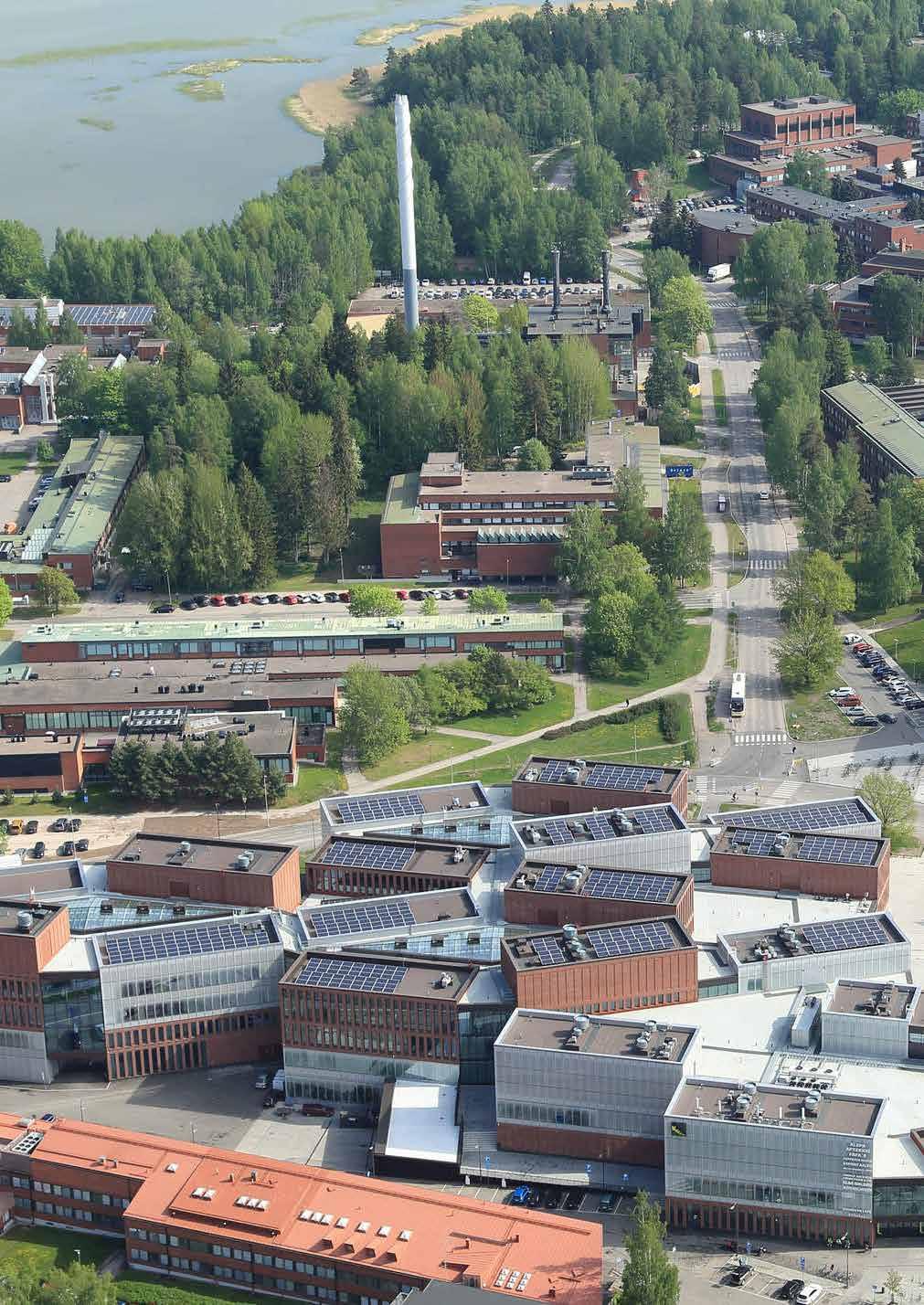
3 minute read
II. Project Brief
Project aim
Aalto University is a university established in 2010 as a merger of three major universities in Finland: the Helsinki University of Technology, the Helsinki School of Economics, and the University of Art and Design Helsinki. The campus is located in Espoo, very close to Helsinki, the capital city of Finland, and it enjoys a very convenient transportation access, full of nature, and a set of historical buildings designed by renowned architect Alvar Aalto.
Advertisement
As part of its campus development, Aalto University aims to realise the transformation of Otakaari road, the main road of Aalto Campus, into a street during the forthcoming years. Otakaari Road runs through the heart of the campus, but in the current state, many people do not prefer staying on this main street. Many say that it is very quiet, way far from a lively highstreet. They even do not recognise Otakaari Road as the 'main street' of the campus. One of the biggest reason it that this road is designed for vehicular traffic. Even though the traffic volume is quite low, approximately 1 in 15 minutes, this main street is dominated by traffic roads. People only use it as a thoroughfare, and there is no reason for people to stay there.
The overall aim of the project is to redesign the whole Otakaari area in such a way that this road is expected to be revitalised. We collaborated with students from Aalto University to tackle this challenge. The Aalto students designed the indoor and outdoor architecture, the roads and the layout of the structures from an architectural point of view, while we, the RCA students, designed the necessary services from a service design point of view. Specifically, the brief requests us to design services that can serve as platforms for co-creating value, opening the Aalto campus to the city and turning a road into a lively street and community.
Student wellbeing
In a project to help Aalto University develop its campus, it is very important to understand its existing development strategy. Through the analysis of the campus vision and strategies, including CAMPUS+, Campus Strategy 2020-30, and Roadmap 2020-30, we have identified five themes to be addressed through the project, which are "Health & Wellbeing", "Diversity & Inclusion", "Social, Community & Cultural Life", "Economic & Business Renewal", and "Sustainability".
Of these themes, we have chosen Health & Wellbeing as our starting point. Studying is a demanding work. It requires the exercising of mental skills, as well as the assumption of responsibility for one’s choices, the planning of one’s studies and the use of time. It requires cognitive skills, creative thinking and information processing. All these are factors that are easily disturbed by, for example, sleep deprivation, depression, poor study conditions, or conflict situations.
The mental wellbeing of students is a serious issue for Aalto University as well. More than twice as many students as the national average are at high risk of study-related burnout, which also correlates with their academic performance. Aalto University has a very unique campus development strategy that puts health and wellbeing, especially student mental wellbeing, as the central concept of its campus development. For example, Campus Vision emphasises the rising stress and health issues, and sets their strategy as to utilise green spaces in the campus as an irreplaceable resource to support the quality of life to realise a healthy campus.
Platformization
"City as a platform" model Platformization Another part of the brief was to think about the service which serves as a platform. The idea of platformization is composed of three elements, which is (1) harnessing the resources, (2) facilitating the multi-stakeholder interaction, and (3) creating ecosystem values.
The model of the “city as a platform” we have developed from this is shown in the diagram above. At the lowest level, there are physical and non-physical resources, which are to be harnessed in the service that facilitates stakeholder interaction at the highest layer, then as a consequence creates socio-economic, cultural and environmental values. From this strategic perspective, the project can be summarised as to explore and understand the resources that we can utilise in Aalto University, to identify what kinds of value we can create in the context of student mental wellbeing, and to design a service that can harness the resources and facilitate
With this framework in mind, the following sections describe:
- How our overall design process looks like
- What value we identified to be realised in order to address the problem of student wellbeing
- What resources we identified as the assets to be harnessed in the service
- How we came up with the service ideas and how we validated them
- What is the service proposition that incorporates all the learnings we got through the process.








